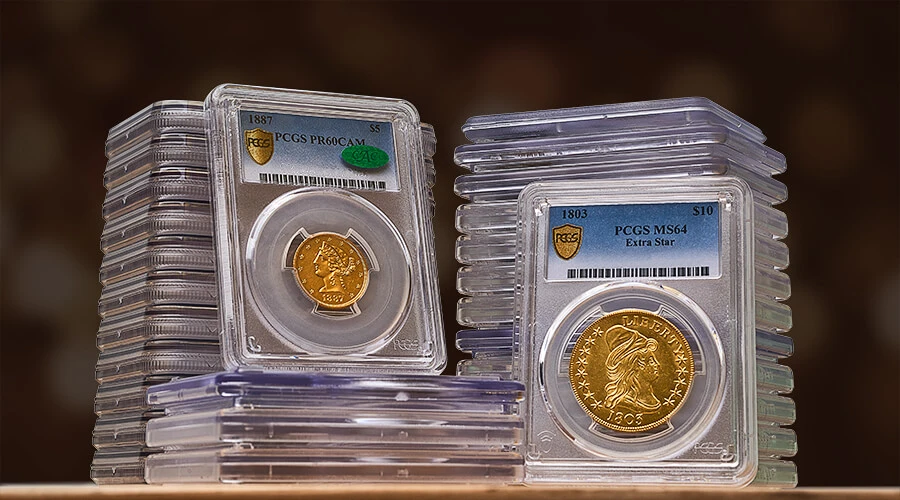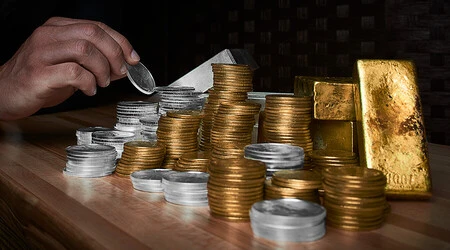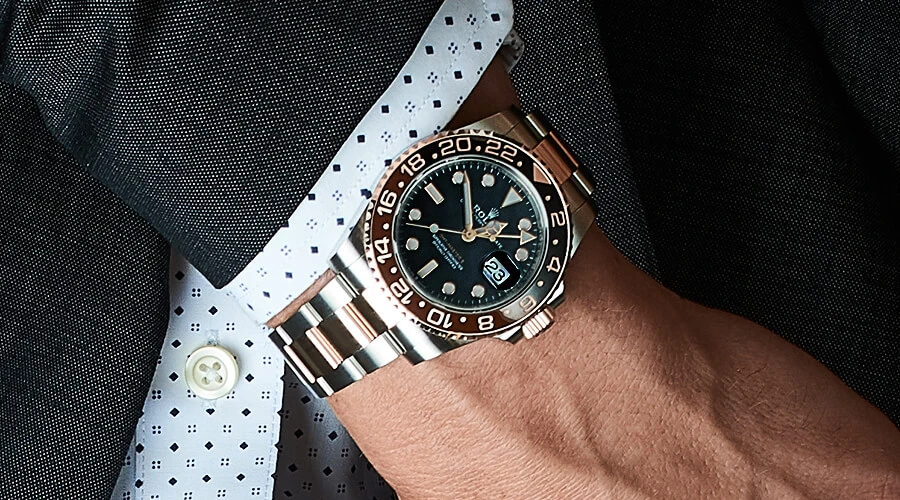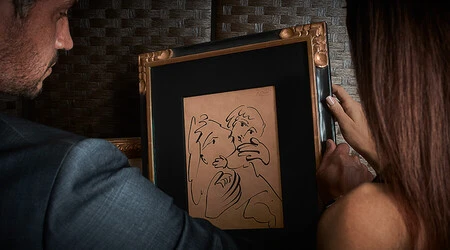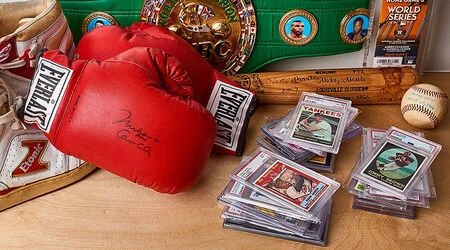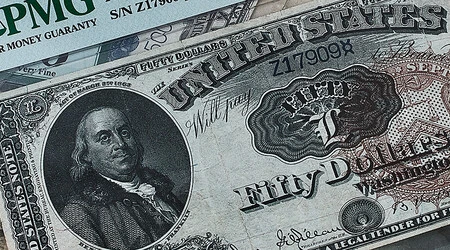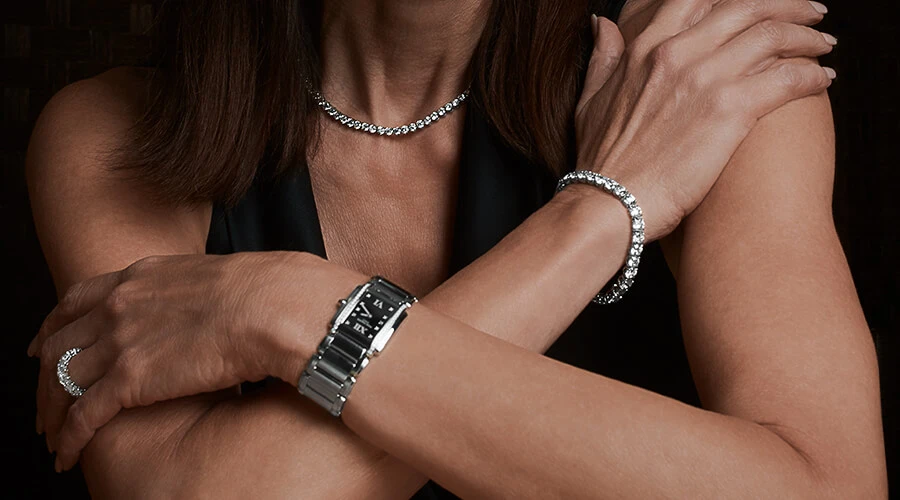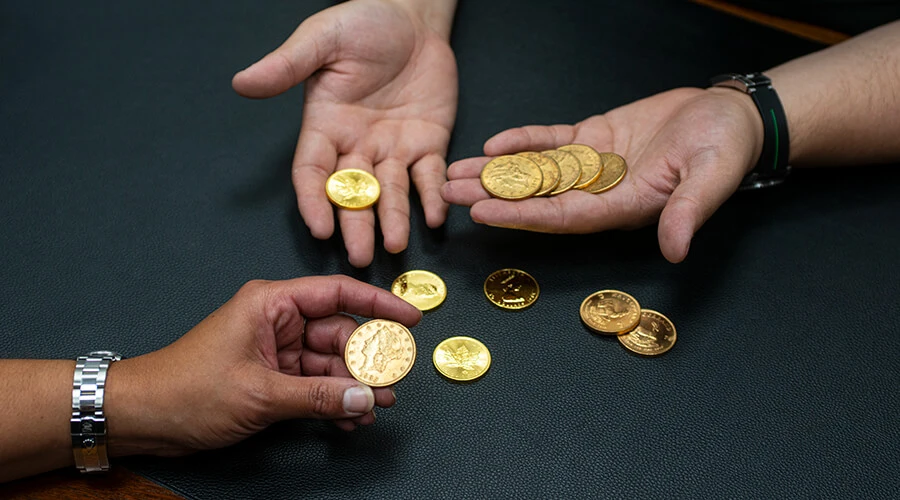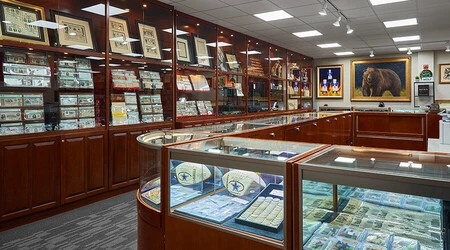It was noon on April 30, 1948, the anniversary of George Washington's 1789 inauguration as President when the Franklin half-dollar made its debut. Employees of the Franklin Savings Bank dressed in Revolutionary-era garb sold them from a booth on the steps of the Sub-Treasury Building in New York. That day an important change took place in U.S. coinage. The Franklin Half Dollar’s introduction completed the conversion of U.S. coin designs from symbolic figures, to portraits of famous Americans. It also closed the curtain on an era that many still regard as the golden age of U.S. coinage art. The Walking Liberty half dollar, last struck in 1947, was the final precious-metal coin remaining in production from the early 20th-century period that spawned the “Mercury” dime, Standing Liberty quarter and Saint-Gaudens double eagle.
The History Behind The Coin
It all began when Mint Director Nellie Tayloe Ross had envisioned a coin honoring Benjamin Franklin. Ross, it is said, envisioned a Franklin coin soon after the release of the Washington quarter in 1932. But the right situation didn’t arise for a decade-and-a-half. None the less, Ross displayed her enthusiasm for the project by directing chief engraver John R. Sinnock to design a Franklin coin on a contingency basis. Her choice of Ben Franklin as a U.S. coinage subject was hard to fault. Of all the United States Founding Fathers, Franklin likely enjoyed the greatest stature among his contemporaries, not only in this country but also abroad. Benjamin Franklin, of course, was one of the most illustrious of all the Founding Fathers. He gained fame as a publisher, statesman, scientist, and inventor and helped draft both the Declaration of Independence and the U.S. Constitution. Though born in Boston, in 1706, he moved to Philadelphia as a young man and spent most of his long life there, becoming synonymous with the city. It was there that he published Poor Richard’s Almanack, conducted his famous experiment on lightning and electricity, invented bifocals and the Franklin stove and played a pivotal role in helping the colonies gain their independence by securing vital aid from France. He died in 1790 at the age of 84 – a remarkably advanced age for a man in that period of time.
Ross had been urged to place Franklin’s portrait on the cent because he was identified so closely with the maxim “A penny saved is twopence clear” (often misquoted as “A penny saved is a penny earned”). Sinnock’s portrait of Franklin was modeled after a bust by 18th-century sculptor Jean-Antoine Houdon. It’s bold and clean, contrasting sharply with the subtle, detailed depiction of Miss Liberty on the Walking Liberty coin it replaced. LIBERTY is inscribed above the right-facing portrait, IN GOD WE TRUST below, and the date to Franklin’s right. Tucked below Franklin’s shoulder are Sinnock’s initials, JRS. An interesting side note, due to the high tensions of the time, many Americans thought Sinnock’s initials “JS” found on the Mercury silver dime stood for "Josef Stalin." possibly trying to avoid controversy, Sinnock inserted his middle initial – “JRS” – on the Franklin half dollar.
The reverse of the coin features the Liberty Bell. This made perfect sense since both Franklin and the Liberty Bell have become closely identified not only with the city of Philadelphia but also the birth of freedom in America. The original design of the reverse did not have an American Eagle fulfilling the requirement of the coinage act of 1792. In fact, it has been said that Franklin would have objected to the Eagle or the reverse. He sometimes referred to the bird as a scavenger although he certainly would have approved of a turkey who he believed was a much more respectable bird and a true original native of America.
The Liberty Bell arrived in Philadelphia several decades after Franklin. The bell was commissioned in 1751 by the Pennsylvania Provincial Assembly and was meant to hang in the new State House, later renamed Independence Hall. It was cast in London by the Whitechapel Bell Foundry and delivered in August 1752, but it suffered a crack during tests and had to be recast twice before taking its place in the steeple in June 1753.
The bell was reportedly rung on July 4, 1776, to announce the signing of the Declaration of Independence, then hidden in a church in Allentown, Pa., the following year, when British troops entered Philadelphia. In 1835, it suffered a major crack while tolling during the funeral of Supreme Court Chief Justice John Marshall, and in 1846 it cracked beyond repair while being rung on Washington’s Birthday. Though silent, it has remained an eloquent national icon ever since.
Sinnock died in May 1947, before completing his work. The duty of finalizing the Franklin Half Dollar fell to his assistant, Gilroy Roberts. Federal law required an eagle on every U.S. coin larger than a dime, and because Sinnock omitted the bird, Roberts stuck a tiny eagle in an open spot on the reverse.
Three inscriptions are arranged around the bell: UNITED STATES OF AMERICA is above, HALF DOLLAR below and E PLURIBUS UNUM, in much smaller letters, to the left. To the right of the bell is a puny-looking eagle. This had been required by law on the half dollar since 1792 and was reaffirmed by the Coinage Act of 1873, which mandated the placement of an eagle on every U.S. silver coin larger than the dime. As you can imagine, the federal Commission of Fine Arts took issue with the eagle’s size, but oddly enough, what they really disapproved of was displaying the crack in the Liberty Bell. Their argument was that “showing the crack might lead to puns and to statements derogatory to the United States coinage.” Although the Commission recommended a design competition, the Treasury Department approved Sinnock’s models without change.
Franklin half dollars were made for only 16 years. The series was cut short at the end of 1963 when John F. Kennedy’s shocking assassination led to the creation of a new half dollar memorializing the martyred president. However, during that 16 year period, there have been a variety of interesting error coins as you will see below.
BUY FRANKLIN HALF DOLLARS ONLINE
Franklin Half Dollar Errors and Varieties
Being produced for only 16 years, left the mint little time to accidentally produce errors and varieties on the Franklin half dollar. While you're searching for specimens at your local coin store or coin show, you may find some examples of these listed below that sell for a premium over normal prices.
1951-S Doubled Die Reverse
This doubled die production error caused the letters in "E Pluribus Unum" to look like they are doubled.
1955 "Bugs Bunny"
As a result of a die clash (obverse and reverse die striking each other without a planchet in between them) the obverse die was damaged. The damage occurred near Franklin's mouth that made him look like he has two large buck teeth.
1956 Proof Type 1 and Type 2 Reverse
In the middle of 1956 a new reverse proof die was made. This resulted in two different types of proof coins being manufactured. On the "Type 1" variety, the eagle has very little detail on its feathers. On the "Type 2" variety, the eagle's feathers are well defined.
1961 Doubled Die Reverse (business strike)
This production error caused all the lettering on the reverse to look like it is doubled.
1961 Proof Doubled Die Reverse
This major mint error caused all the lettering on the reverse to look like it is doubled. This doubling is so pronounced you do not need a magnifying glass to see it.
John Sinnock, the Mint’s chief sculptor-engraver, prepared the basic designs for the Franklin half dollar before his death in 1947. His assistant and successor, Gilroy Roberts, applied the finishing touches – including the addition of a diminutive eagle on the reverse to satisfy a statutory requirement.
The assassination of President John F. Kennedy on Nov. 22, 1963, led to calls for a JFK coin, and the half dollar was chosen, ringing down the curtain on Franklin halves. Soon after, the introduction of copper-nickel coinage led to the systematic hoarding of U.S. silver coins, including Franklins.












